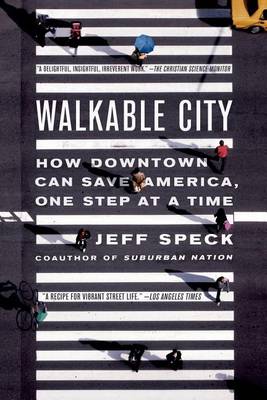
Jeff Speck has spent his career determining what makes a city work, and he has boiled it down to one essential factor: walkability. For urban life to thrive, cities must prioritize pedestrians over cars. Six-lane highways tearing through downtown must give way to crossable streets, massive parking lots must give way to pedestrian plazas, architecture designed to be appreciated from afar must give way to welcoming buildings. Making all of this happen is relatively easy and cheap; seeing what needs to be done is the trick. Speck can show us the invisible workings underneath the city, how simple decisions have cascading effects, and how we can make the right decisions for our cities. Cities have been recognized as the key to sustainable living. But New York, San Francisco, Chicago, D.C. - these are not the next great American cities, and they are not where the future of urban life will be formed. Most Americans live in midsize cities - Lowell, Massachusetts; Tacoma, Washington; Grand Rapids, Michigan - that need downtowns that are vibrant and appealing; they need to feel like the urban hubs that they are. They need walkability.
Bursting with sharp observations and real-world examples, giving key insight to what urban planners actually do and how cities can and do change, "Walkable City" lays out a practical, necessary, and eminently achievable vision of how to make our American cities work.
Interesting Yet Myopic. This is one of those books that has a lot of interesting points and is presented well, with a decent amount of humor even... and yet is also *incredibly* myopic at best, and could readily even be classified as elitist and condescending, possibly even racist. As someone who was actively running for small town rural City Council around the time this book was originally being written a decade ago, there are a lot of good points here - but there are also even more points that I could have quite easily shot down with barely any effort at all. Such is the level of the holes in Speck's "reasoning", such as it is. Read this book. But study the *entirety* of the implications of Speck's suggestions. Recomended.
Reading updates
-
Started reading
-
Finished reading
-
3 November, 2020:
Reviewed
